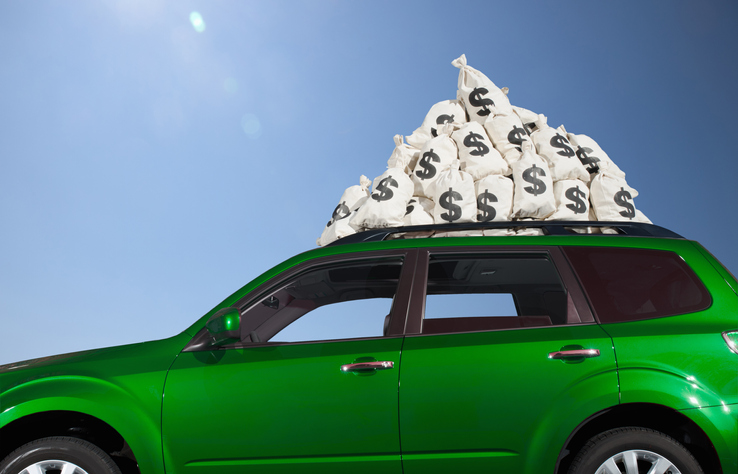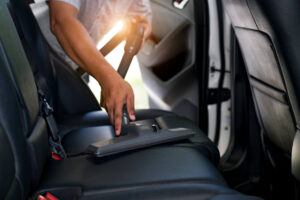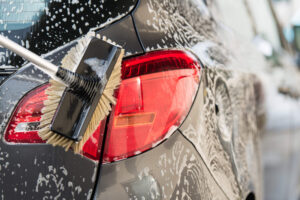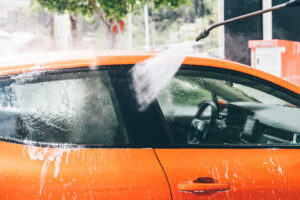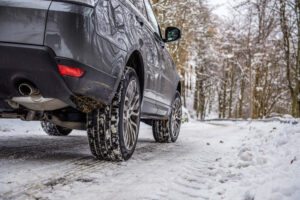Car Maintenance & How Best To Keep Your Vehicle’s Value As High As Possible
It is very rare for a homeowner to buy their dream home and do nothing with it. Owning a car is no different. Just as most homeowners try to improve – or at least maintain – the value of their home and maximize its resale value, car owners should do the same with their vehicles.
Unfortunately, no matter what a car owner does to stop it, a new car gradually loses value and depreciates as soon as it is sold. Although there are a handful of rare exceptions for cars that become “vintage” classics, the vast majority of vehicles are sold used for a significantly lower price than they were bought for as new cars. However, there are ways to minimize this financial blow and keep the damage to the wallet less severe than it could be if nothing is done.
Buy at a Good Price
Of course, the easiest way to stop a car’s depreciation from hurting the bank account is to spend less in the beginning. This is a preventative measure, sure, but it doesn’t make the logic any less true. The less spent up front, the less can be lost. Getting a decent price begins with some simple steps:
- Do research before buying. A quick Google search can reveal a huge amount of information about a car. This can be information that helps negotiate a lower price (e.g. “I’ve heard that these have radiator problems”) or it could be as basic as finding out what the typical selling price for the make and model is. Either way, the more a buyer arms themselves with knowledge, the better equipped they will be to find a good deal on their car.
- Contact a savvy friend. A lot of people have “the car friend.” This is the same person to call to fix car troubles without paying a mechanic, or to answer questions about what that weird noise coming from under the hood means. The car friend is also the person to consult before buying a car, as their knowledge can add to good research and help secure a good deal.
- Use a car buying service or broker, but pay as close to the invoice as possible. Don’t get caught up in bizarre extra fees, since these can add up quickly and cause far more stress than is necessary.
A good deal at the beginning of a car’s lifespan can pay dividends later in its life when it is time to sell. Buying for below market rate means that the car can be sold at market rate later, potentially even at a similar price to what it was purchased for initially.
Park With Care
A certain amount of wear and tear is inevitable. Just driving and using a car will always cause bumper scratches, door dings, and fading plastic. These are like wrinkles on skin – nothing can be done to prevent them, and they are just a sign of a certain history of fun and living. However, also like wrinkles, this damage can be greatly minimized with proper care. Parking further away from other cars, even as far as the edge of a parking lot (as much as some passengers may protest) can offer excellent long-term protection. When that isn’t an option, choosing spots that leave the car less vulnerable to other vehicles that are passing or turning is helpful. The best spots for this are parallel spaces at the end of a row, as long as there aren’t any vacated side-by-side stalls.
Of course, the most important parking strategy of all for protecting a car isn’t out and about in parking lots far from home. Parking in a garage is vital for maintenance, and keeps a car away from the elements like ice, sun and hail that can damage it.
Keep the Mileage at a Minimum
It might sound silly, but driving less keeps the value high and the mileage low. The number one question anyone asks when inquiring about a vehicle for sale is “How many miles does it have on it?” Every potential buyer from the professional car dealer to the neighborhood friend knows that the number of miles on a vehicle determines its market value.
The average number of miles people drive annually is somewhere in the range of 12,000 and 15,000. The value of a vehicle drops precipitously once it hits six figures, and once it hits the 200,000 mile mark the value nosedives. Keeping mileage down can be a multifaceted effort. If possible, ask other friends or family to do the driving with their own vehicles. For a long trip, consider renting – ideally with accumulated miles or rewards points. By using the insurance on a credit card and renting a car for a longer road trip, rentals can cost less than $40 for a whole weekend and avoid adding hundreds of miles to an owned vehicle. That more than pays for itself, and it can also save a lot of money on fuel if the owned car isn’t especially efficient.
Protect Areas Prone to Scratches and Wear
Some parts of a car are more prone to heavy wear and tear than others. The front end, for instance, is far more vulnerable than the back. Many people opt for a clear plastic guard (or “bra”), which can be affixed by the dealer or an aftermarket shop. Bras can reduce the damage caused by rock chips, rust, and very minor collisions with other vehicles. To protect from somewhat worse collisions, consider getting a bumper guard (one popular brand is the Bumper Bully, but shop around). Carbon fiber tape or vinyl wrap around other commonly scratched areas can help too. When it is finally time to sell the car, remove the wrap and it should look good as new. Mudguards are also a good option to prevent dirt from accumulating on – and damaging – the paint. Mudflaps usually cost less than $100, and can pay for themselves quite quickly.
Consider Getting a Tougher Vehicle
Many people live in far northern climates or use their vehicle for more than transportation. Towing boats, recreational vehicles, cars used to move between houses, haul plants or shrubbery, or similar uses can lead to additional wear and tear. These activities can cause significant long-term damage. That is why many people buy a “winter” or “utility” truck or car, with the intention of reducing damage to their primary vehicle and concentrating the rough stuff on a vehicle that can handle it a little better.
At the very least, it is important for people who live in cold regions to buy an extra set of wheels and tires for the winters. This can cost a lot initially, but it saves in the long run. It reduces the risk of expensive (and dangerous) accidents, and cuts the amount of use both sets of tires get in a year which prolongs their tread, lifespan and value. Without corrosion from salt and sand, shiny aluminum rims will look good after years of summer-only use, and a lot of money will get saved in that time frame too. Using tougher vehicles or wheels will make sure that something a little more durable can take the damage when the going gets tough. The concept is the same as a construction worker wearing thick denim “work pants” that can get dirty in messier jobs.
Perform Regular Maintenance – and Keep the Records!
This may seem extremely obvious, but regular repairs and maintenance can fix or prevent problems. Such maintenance makes sure everything works exactly as it was meant to over the life of the car, or at the very least during your ownership of it. Many people avoid taking their car to a service station unless it is absolutely necessary, it is still a very smart thing to do. Regular maintenance can help to prevent large and expensive repairs further down the line, meaning that the total cost spent on the car over its ownership period will be lower, meaning that comparatively the resale value will be higher.
However, all of the maintenance work is useless unless there is proper documentation to confirm that it happened. It is critical to keep every single record and receipt. All of this paperwork helps to demonstrate to a possible buyer that the car has been properly taken care of during its ownership period. A proven history of maintenance and repair can show a certain level of diligence, and help demonstrate that the car was appreciated and looked after. Vehicles with well kept records usually sell sooner and with a much higher price than ones without any good documentation of maintenance. Routine maintenance also helps ensure that major components last as long as they are supposed to, and means that potential buyers won’t be scared off by something like an engine that is close to failure. And keeping records for maintenance and repairs is a good idea even if depreciation isn’t the main concern, as it helps mechanics know what work has been done and informs what work they should do.
Fight Rust
Rust is often called “cancer of cars.” That title is well earned; rust can corrode and eat away at the exterior (and eventually the interior) of any vehicle over enough time. Rust should be avoided like the plague it is, and car owners should work as hard as they can to stop it from forming and spreading. For car owners who live in colder climates with harsh, long winters, it is imperative to wash their vehicle regularly to remove salt deposits that can lead to rust. Furthermore, it is probably a good idea to have the car undercoated with some type of rust proof spray to stop salt deposits from forming on the frame and underside of the fenders and quarter panels. There are many commercial sprays available that can prevent rust, which people can purchase to keep their car protected from rust throughout the rest of the year.
Nothing will make a potential buyer pass over a car for sale faster than rust. It is the single greatest and most visible blight to a car’s value. Therefore, it is important to understand how rust forms. Rust occurs because of the electrochemical breakdown of iron-based metals, like the steel that most car frames are made from. That breakdown happens as a result of oxidation, the process wherein surface iron molecules react with oxygen in their environment (either from air or water) to produce a new molecule called Fe2O3 or Iron(III) Oxide, commonly referred to as rust. Strangely enough, pure iron doesn’t oxidize that easily – that’s why old cast iron pots can stay black for decades. Sadly, however, pure iron isn’t a very good material to make cars from and most modern car frames are made from steel alloys. Although this makes a stronger, more flexible, and safer frame, the tiny amount of carbon added to iron to make steel is an impurity that accelerates the oxidation of the metal. There are many factors that can affect how quickly and severely rusting happens: thickness, alloy components, the environment the steel is exposed to, and the type of heat treatment used to make the steel. Infamously, in the 1970s, poorly made cars started rusting more or less as soon as they left the dealership floor. These untreated raw sheet steel frames rusted through in just a few short years, nearly bankrupting Toyota and causing them to drop the Hilux truck line almost immediately.
As mentioned earlier, another factor is salt. Road salts and various other chemicals, when dissolved in water, act as a catalyst to the rust oxidation reaction and speed up the process. If dirty or salty water gets trapped somewhere in the body of a car, the spot will rust quickly. This is why cars in northern climates (where salt is put on the roads to treat ice) and near the ocean rust much faster. Although nowadays an astonishing amount of testing and material science goes toward stopping rust, until scientists discover a cheap rust-proof steel, there is still a heavy burden on car owners to prevent rust themselves. Here is how to prevent rust reliably:
- Inspect the car regularly. Finding tiny rusted spots or trapped salty or dirty water before it becomes a big issue means the problem can be dealt with before it grows out of hand. Make sure to look especially carefully at the underbody of the car and road-facing side of the car where the wheels kick up dirt and water and effectively sandblast away any rust-proof coatings. Sometimes surface rust isn’t a huge issue, and if a car owner leaves a car with steel disc brake rotors parked for a while then surface rust forms on the rotors. However, the rust is wiped off after just a few stops of the car, so it’s not something to panic about.
- Keep on top of paint damage. Scratches, nicks and cracks in a car’s paint are an easy place for rust to gain a foothold. Paint is the first line of defense from rust, and damage to the paint job makes the steel vulnerable. Painting over this damage may not seem worth the cost, but in the long run it saves a lot of money compared to severe rust damage. Paint gradually breaks down everywhere on a car through mechanical or UV damage, so it can be a good idea to regularly touch-up the common wear areas.
- Use rust inhibitors when necessary. A rust inhibitor, also known as a rust converter, is a chemical that converts Iron(III) Oxide into a more chemically stable and moisture-resistant compound that actually protects the rest of the metal under it. Rust naturally does this to some extent (a process called “passivation”) but a good rust inhibitor will make this happen effectively enough to turn rust into a true shield against further damage. Good rust inhibitors have ingredients like tannic acid and 2-butoxyethanol, and can usually be bought online or at an auto shop for less than $25. When applying the rust inhibitor, make sure to wear rubber gloves and apply the chemical coating with a brush or sponge. Pour as much as necessary into a disposable container, since double-dipping into the bottle is a terrible idea: any rust that gets in the bottle will react with the compounds in the inhibitor solution and inactivate them. Wipe a thin layer of the inhibitor onto the rusted part of the metal and wait at least 30 minutes for it to dry. Add a second layer and wait another 30 minutes for it to dry, and keep the material totally dry for 24 hours. After this, the material can be primed and painted over.
- Keep a sharp eye out for scale rust. If surface rust progresses deeper into the metal, bubbles can form on the car’s paint. This causes the metal to flake away in damage called “scale.” Correcting scale requires using a rough wire brush to get through the rust, knocking down roughness with a grinding wheel, and then smoothing it out with sandpaper. It’s important to get down to bare metal, otherwise flakes could cause sealer to pop off. Rough up the area near the bare metal so treatments can adhere to it better. Getting some body filler to seal these spots is ideal, but make sure to follow the instructions carefully since they can vary widely depending on brand, room temperature, and how quickly the materials dry and harden once mixed.
- If rust is worse than scale, get a professional. Once things get so bad that there are Swiss cheese style holes in the frame, get the parts replaced or fixed by a professional mechanic. It’s too late to fix this problem easily at home.
It might sound a little silly to regularly inspect a car that is in otherwise good condition for rust, or follow any of these other steps to fight it, but to maintain the value of the vehicle it is more important than most people might think. After all, all it would take to scare off a potential buyer is a quick look under the car and seeing rusted out spots. The danger that rust poses to a car’s resale value really cannot be understated, so it’s crucial to fight against it.
Wax and Wash Regularly
Many car owners will only wash their car when it gets intolerably dirty and right before they resell the vehicle. However, while it may seem excessive to some, keeping a vehicle clean is one of the best ways to reduce its depreciation and maintain a good value. The cheapest way to do this is to hand wash the car regularly, especially between seasons, and apply wax, scrub floor mats, prevent stains, and keeping it clean by parking it in a garage. It’s also important to avoid smoking in the car, driving on dirt roads when not necessary, or otherwise getting the car dirty.
That being said, hand washing and waxing the car at home is not the best way to slow depreciation. Getting a professional car wash – the type with automated washing machines or workers who do detailing and trained hand washing – can be a very smart investment for any car owner to make. And while having a nice looking car helps it sell, it is about more than cosmetics. Regular car washing can help protect the vehicle’s finish. The residue and road grit left from driving, as well as bugs, bird droppings or other materials that cars endure can lead to corrosion and damaged paint. Not only does this save money in the short term by protecting the paint job, it maintains the value of the car, too.
Regular washing doesn’t mean that every little spot requires a trip to the car wash, but it does mean that a professional cleaning shouldn’t wait until the car is so dirty that the windows are hard to see out of. Waiting until the car is intolerably dirty is a surefire way to damage it and accelerate depreciation. Although modern cars are not nearly as susceptible to peeling paint, rust, and faded clearcoat as the cars of the past were, they still need thorough and regular cleanings to stop salt, grime and mud from accumulating in the multitude of places that they get stuck. A thorough and professional wash gets things out of the various nooks and crannies where salt or grime buildup can attack the metal and cause rust damage. Things like bugs or bird droppings contain amino acids and other chemicals that can corrode the film on a car and cause other problems.
However, with the huge selection of car washes even in smaller towns, it can be difficult to find the right car wash. Unfortunately, the car wash industry is one that is rife with scammers, corner cutters, and con artists, so it is important for car owners to do their due diligence before choosing one. The wrong car wash can actually damage a car and decrease its value, and hand washing with the incorrect method or materials can also cause more harm than good. As such, follow these steps to find a reliable car wash:
- Check out the reviews. Online reviews are a great way to avoid the worst offenders when it comes to picking a car wash. Of course these reviews should be taken with a grain of salt – people tend to only leave a review when they have an especially good or bad experience. That being said, anything with a 4.0 or higher on Google business reviews is probably a safe bet. Also consider checking out independent review sites like Yelp or Angie’s List, and make sure to look at both the best and worst reviews for a good idea of the range of possible experiences.
- Don’t go for the cheapest option. Sadly, when it comes to car washes, you get what you pay for. Car washes that seem inexpensive can often have a hidden cost; they can save the wallet but hurt the car (which ultimately hurts the wallet too in the long run). Cheap car washes often have brushes that are far too harsh for most cars or use cheap, caustic soaps that remove dirt quickly but also eat away at the car’s finish. These businesses will try to compensate for their low revenue by cutting corners when it comes to their expenses. One big red flag to look out for, and something that cheap car washes almost all do, is skipping the vital presoaking stage. Without presoaking before the wash, dirt simply gets dragged across the surfaces of the car instead of actually getting washed off. A good car wash will apply soap at the beginning of the process and let it soak in for a minute. That soap has lubricants and surfactants that break the bonds the dirt has with the surfaces of the car, making the rest of the wash far more effective.
- Judge it by eye. The best way to tell if a car wash is any good is to just pull on in and have a look. Take note of the cars leaving the wash – are they dirty or clean? Is the building well taken care of, or is it dilapidated? If there is an office, is it well organized and tidy, or is it messy and full of strewn papers?
- Don’t hesitate to go green. Car washes have the potential to be a catastrophically harmful business for the environment. Businesses that don’t care about this and focus exclusively on their profit margins probably also don’t care much about their customers. Ask them if they recycle their water, or check online on their website (good businesses love to advertise it when they do). Keep an eye out for workers dumping used soaps or chemicals in drains, on asphalt, or in grass. This might seem silly, but it helps keep the environment clean and serves as a pretty good indicator of how much a business cares about the community it serves.
- Check the Better Business Bureau. For more than a century, the Better Business Bureau has offered independent information on business quality and rated businesses across the country to help consumers make better choices. Before putting a car through any car wash, make sure they have a good grade on their free business lookup tool.
Now, after finding a good car wash, there is still the question of what services to pay for. Many car owners have their own beliefs about this sort of thing, but there are quite clearly some services that are more worthwhile than others. For instance, getting an undercarriage wash isn’t always necessary, but it is a good idea to opt for one at least once every season – especially in regions that get harsh winters where the roads are salted. To help fight rust, a professional undercarriage wash can be a massive asset, since these washes remove mud, sand, and salt that can get trapped in the difficult to reach parts of a vehicle’s underbody. Areas like the wheel well are especially vulnerable, and tend to trap moisture, salt, or other corrosive substances. The high pressure wash of an undercarriage sprayer gets all the junk out and helps keep the car valuable for years to come.
Fancy or gimmicky services can be a more mixed bag. For example, “touchless” car washes have gained a lot of popularity in recent years, but they may be somewhat overhyped. While some bristle or soft-cloth washes can create problems if not properly maintained, touchless washes aren’t always tough enough to remove all the dirt. Therefore, it’s better to just check out the brushes before getting the wash. If they’re dirty, they might cause damage, so it’s probably better to opt for a different car wash. If the exterior of the building is well maintained and the site is clean, then it’s highly likely the car wash equipment is maintained properly as well.
Choose a Reliable Lancaster Car Wash
For Lancaster County residents looking for a reliable local car wash, consider contacting us to learn more about our services. Find a location today, and pick the smart option to stop depreciation in its tracks.

